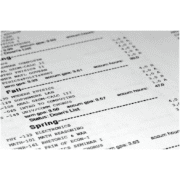R2T4 Rule Changes Now in Effect
R2T4 Rule Changes Now in Effect
A little more than a year ago, the Department of Education (ED) put out revised rules addressing several thorny Title IV compliance areas, including a perennial favorite: return to Title IV funds (known as R2T4). A team of negotiators had spent months in 2019 trying to improve the rules on student withdrawals, particularly as they apply to programs taught in modules. The final rules were published under the title of “Distance Education and Innovation” on September 2, 2020, and officially took effect on July 1 of this year, although schools were allowed to implement the changes sooner at their discretion.
ED has recently provided additional guidance on the new rules, primarily through updating a set of Q&As. While most of the revisions were made in August 2021, note that a few answers were revised in early September and then again in October. An April webinar focusing on changes to satisfactory academic progress and R2T4 is also useful in laying out the changes.
The revised rules change several existing definitions and introduce some new concepts:
Program Offered in Modules. Subscription-based programs and nonterm programs are now excluded from the definition. If any course offered during a term does not span the entire length of the payment period or period of enrollment, the program is offered in modules. At some institutions, while the fall and spring terms only include standard length courses, two shorter summer sessions may be combined into a single term and thus meet the definition of a program offered in modules.
Withdrawal Exemptions. A student is not considered to have withdrawn if:
- In any program (not just a program offered in modules), the student has completed all the requirements for graduation before completing the days or hours in the period
- In a program offered in modules
- The student successfully completes one module that includes 49 percent or more of the number of days in the payment period
- The student successfully completes a combination of modules that include 49 percent or more of the number of days in the payment period
- The student successfully completes coursework equal to or greater than required to meet the institution’s definition of a half-time student for the payment period
This is the first time the R2T4 rules consider a student’s success in the course as a determining factor. Generally, under the R2T4 rules, an earned “F” is treated the same as any other completed course.
For the purposes of the withdrawal exemptions, the number of days in the payment period is calculated by excluding scheduled breaks of five or more consecutive days and all days between modules. It will be the same for all students who enroll in the term. This is not the same as the denominator used in R2T4 calculations.
R2T4 Freeze Date Option. Institutions now have two options for determining the denominator used in the R2T4 calculation to figure out how much aid has been earned when a student withdraws from a program offered in modules:
- Using an “R2T4 freeze date” as a fixed point in time to determine the number of days the student was scheduled to attend during the payment period. The R2T4 freeze date is different from a Pell recalculation date and is used for different purposes even though the school may determine they are the same date. The freeze date must not occur prior to the time that most students enroll for classes for the period. OR
- Monitoring changes in the student’s enrollment throughout the period.
Scheduled days should count if they were used to determine the student’s eligibility for Title IV funds for the payment period. This is not a student-by-student decision; the school must use the same policy for all students.
Much more detailed guidance on the ins and outs of the revised R2T4 rules are discussed in ED’s Q&As. Schools are encouraged to study them closely.








